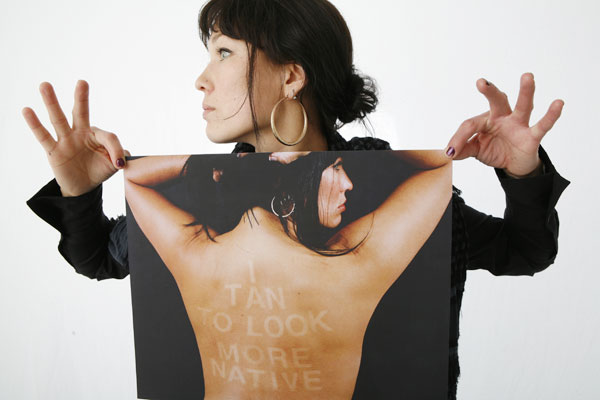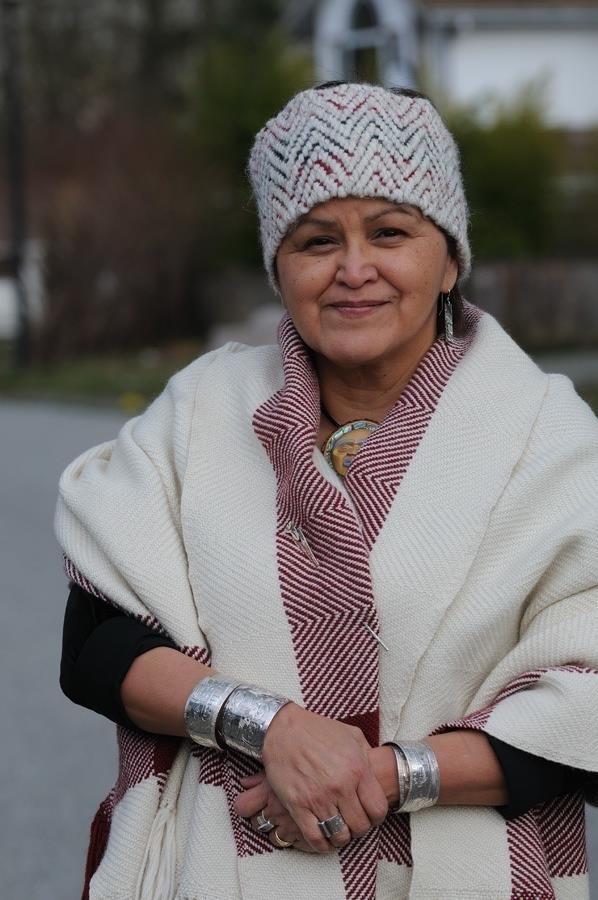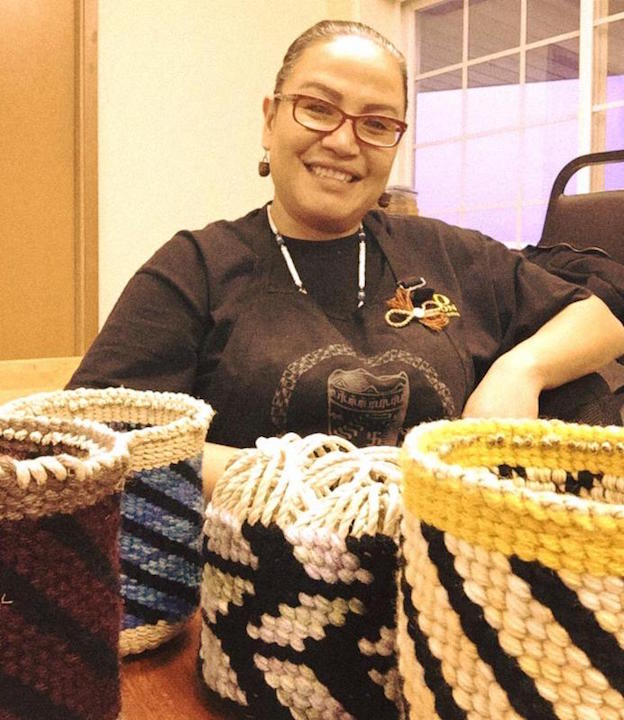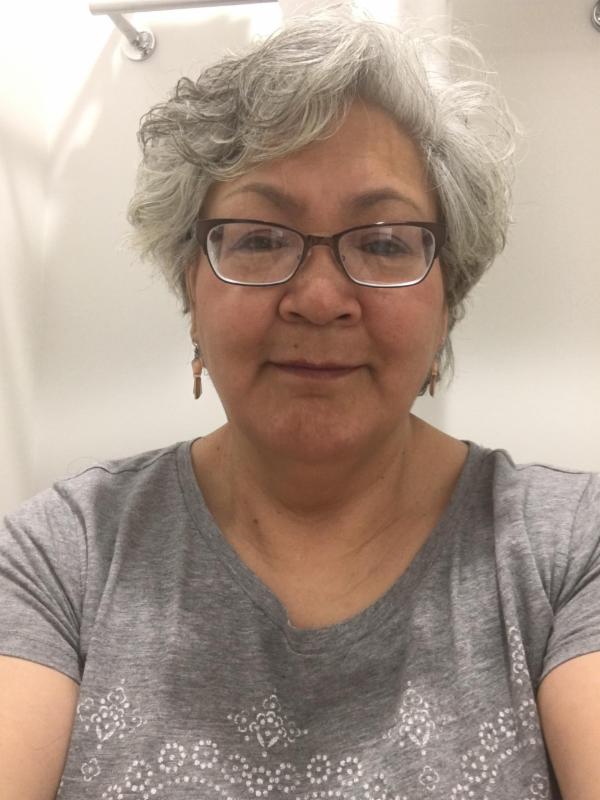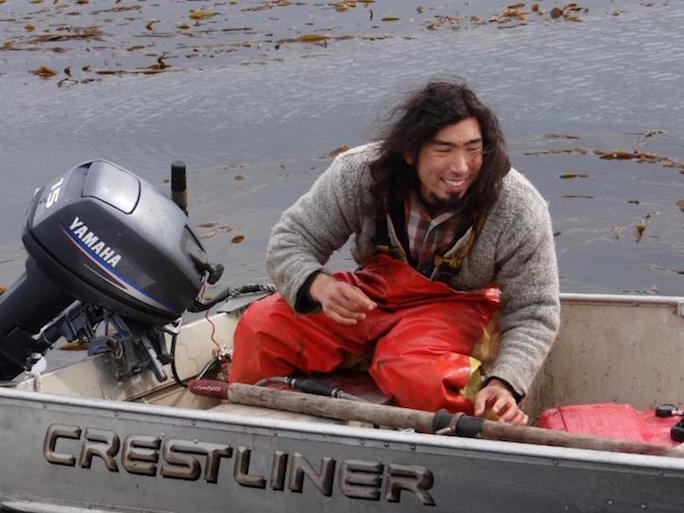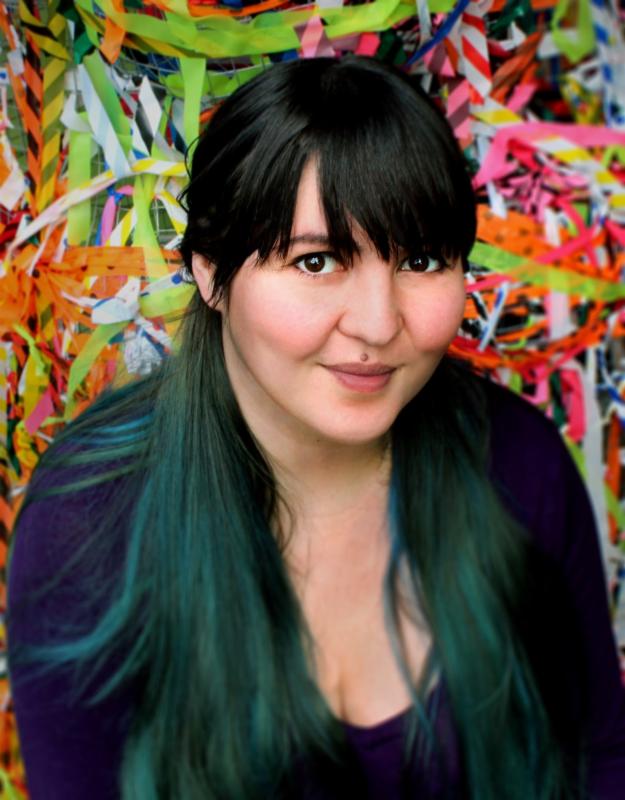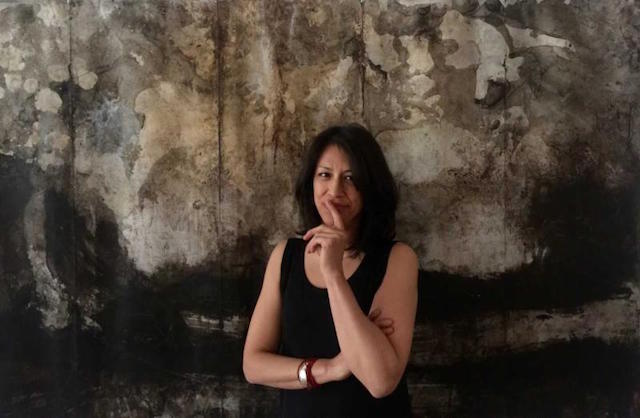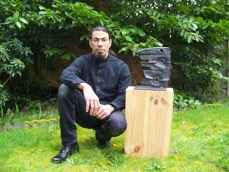 |
Canku Ota
|
 |
|
(Many Paths)
|
||
|
An Online Newsletter
Celebrating Native America
|
||
|
August 2017 - Volume
15 Number 8
|
||
|
|
||
|
Institute Of American
Indian Arts Announces Artist-in-Residence Lineup
|
||
|
by Indian Country Media
Network Staff
|
||
|
10 Native American
artists scheduled for residency at Institute of American Indian
Arts
Since August 2015, the Institute of American Indian Arts has hosted month-long artist residencies, and recently the school announced its lineup for the Fall 2017 Artist-in-Residence program. Native American and First Nations artists visit the school in Santa Fe, New Mexico to make art and interact with both the campus community and the Santa Fe arts community. The program also includes public receptions and artist talks with each of the artists. "We often think art is created in solitude. But that's not necessarily true. The artists participating in the residency program are coming to make art as part of a community," said Dr. Lara M. Evans (Cherokee Nation), the Artist-in-Residence program director, in a press release. "It's a chance to come together, to share creative processes and the meanings behind their materials and techniques. It's chance to experiment, too. Each artist brings something new to the community, and we all become part of the history of the new work artists create during their residencies. It's very exciting!" September 1-30, 2017 Three female Native American artists will converge on the Institute of American Indian Arts in September for the Artist in Residence Program. Janice George (Chepximiya Siyam), from Squamish Nation, Canada, is a master weaver and textile artist who learned to weave from Coast Salish weaver Susan Pavel and Subiyay-t Bruce Miller of Skokomish in 2003. George integrates Squamish teachings into her work from her late grandmother Kwitelut-t Lena Jacobs and other Squamish ancestors. "In this short time of my weaving life, a few of my mentors have left this earth. Their breath is carried on in the teachings I pass on. I feel and see the pride that comes from reclaiming our inheritance from our elders and ancestors when we weave and when we wear our beloved weavings," George said in an Institute of American Indian Arts press release. "We are taught spiritual protection is part of what we are wearing and feel the love that is put in each hand movement it takes to make a robe." George co-authored "Salish Blankets, Robes of Protection and Transformation, Symbols of Wealth" with Willard Joseph and Leslie H. Tepper. For the last 12 years, she has been teaching her textile skills across Salish speaking territory.
Leanne Campbell, an enrolled member of the Coeur d'Alene Tribe or Schitsu'umsh—meaning "Those who were found here" or "The Discovered People"—also counts the Confederated Tribes of the Colville Reservation located in central Washington and the Nez Perce Tribe of Idaho among her lineage. Campbell embraces her history and culture, and speaks the Schitsu'umsh language. She is most known for her unique skills in traditional and cultural arts with beadwork and basketry. Her beadwork is a mix of pictorial, geometric designs and old style floral designs of the Northwest Columbia Plateau. Campbell gained valuable experience and knowledge by working over the past 24 years with the Coeur d'Alene Tribe. She's currently the Historic Preservation Program Manager/Curator for the tribe.
Martha Marlene Ann Nielsen is Yupik from Kokhanok, Alaska, located on the south shore of Lake Iliamna, which is the largest lake in Alaska that is home to several species of fish. Since she was young, Nielsen has helped to preserve sockeye salmon for the winter. She is self-taught in the art of making baskets, wallets and jewelry with sockeye salmon skin. Salmon skin art was seen as a lost skill in her area, which inspired her to reintroduce the rare technique by teaching students of all ages.
October 4-November 4, 2017 The Institute of American Indian Arts will welcome four Native American artists during October including Erica Lord, who draws on her mixed race cultural identity—she is of Athabaskan, Iñupiat, Finnish, Swedish, Japanese, and English descent—to explore concepts that exist within a contemporary indigenous experience and how culture and identity are affected in a quickly changing world. Lord uses a variety of mediums to construct new and challenging representations of race. Born and based in Alaska, Peter Williams strives to express and celebrate oneness in all things, with an emphasis on the human spiritual relationship with nature. He sees this connection in his art as imperative for healing the human soul and the well-being of the planet. Meat is a large part of Williams diet; before a hunt, he smudges and prays for a safe and clean hunt. He asks the animals for their lives before shooting them. Williams sees these acts to honor the animals as a way to enable their spirits to visit again. He has demonstrated skin sewing seal and sea otter fur by hand, and says that each stitch binds the human world closer to the animal world. Through his label Shaman Furs, Williams carries on the historic art of elegant and simple textile construction built to endure Alaska's elements. He presented at New York Fashion Week in 2015 and his first runway show as at Brooklyn Fashion Week in 2016. That same year, he was profiled in the New York Times.
Seattle-based artist Ryan Fedderson (Confederated Tribes of the Colville Reservation/Okanogan/Arrow Lakes) creates multi-layered environments and interactive sculptures alongside intimate studio work. Her tongue-in-cheek work has a pointed message and provides an opportunity for a re-examination of shared histories through humor and fun, and hands-on engagement. She often addresses hypocrisies and injustices in contemporary American culture in regard to race, class and gender in her work.
November 6- December 6th, 2017 The final four Native American artists visiting the Institute of American Indian Arts include Athena LaTocha, Frank Buffalo Hyde, Jason Reed Brown, and Wanesia Misquadace. Born in Anchorage, Alaska, Athena LaTocha is a painter interested in landscape, land art, and earth excavation. She's been working in the arts for nearly 30 years, and has had her work shown across the country including a solo exhibition at the Institute of American Indian Arts Museum of Contemporary Native Arts this year.
Frank Buffalo Hyde (Nez Perce/Onondaga Nation, Beaver Clan) was born and currently lives in Santa Fe. He uses American icons to explore the miscommunication of cultures. He often turns the stereotypical imagery of the "Indian" on its ear with his own brand of satire. He has shown internationally and in 2013, a suite of 13 paintings titled "SKNDNS-Native Americans on Film" was purchased by the National Museum of the American Indian.
Raised between the urban and rural landscapes of the Pacific Northwest and Alaska, Jason Reed Brown is a blacksmith artist. His designs stem from a desire to combine his lifetime of exposure to Northwest Coastal art and a city lifestyle. He "translates" Northwest Coastal Native art into the medium of metal. Before attending the Institute of American Indian Arts, he worked as a tattoo artist and muralist. While at IAIA, he discovered a passion for sculpture, specifically working with metal. Wanesia Misquadace is a master of birch-bark biting, a traditional art that she puts into a contemporary context by using the patterns as jewelry templates and combining the birch bark panels with metals and stones. World-renowned master metalsmith artists like Lane Coulter and Fritz Casuse have been her mentors and teachers.
|
||||||||||||||||||||
|
|
|
|
||
|
|
||
| Canku Ota is a free Newsletter celebrating Native America, its traditions and accomplishments . We do not provide subscriber or visitor names to anyone. Some articles presented in Canku Ota may contain copyright material. We have received appropriate permissions for republishing any articles. Material appearing here is distributed without profit or monetary gain to those who have expressed an interest. This is in accordance with Title 17 U.S.C. Section 107. | ||
|
Canku Ota is a copyright ©
2000 - 2017 of Vicki Williams Barry and Paul Barry.
|
||
 |
 |
|
|
The "Canku
Ota - A Newsletter Celebrating Native America" web site and
its design is the
|
||
|
Copyright ©
1999 - 2017 of Paul C. Barry.
|
||
|
All Rights Reserved.
|
||
